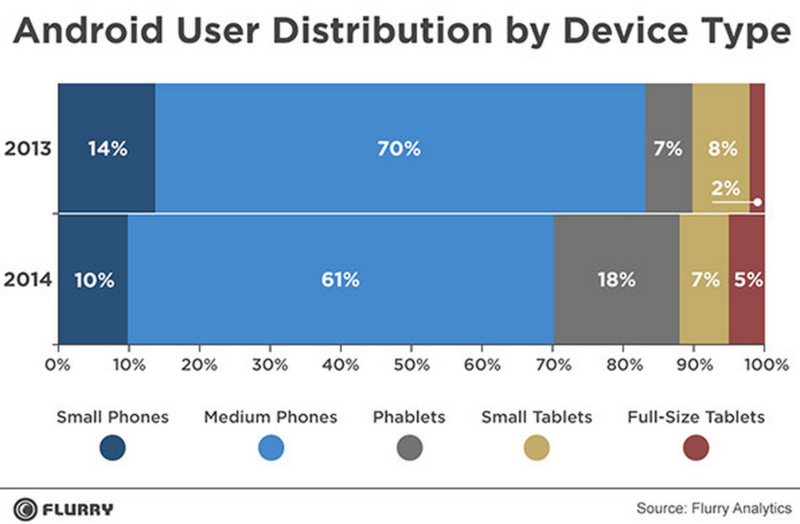Size Matters: Larger iPhones Respond To Phablet Mania
Tomorrow is the Apple show and there will be several hardware announcements. Among them we’ll probably hear about two new iPhones: 4.7-inch and possibly 5.5-inch models that seek to satisfy the consumer appetite for larger and larger screen sizes. Driven in part by the Android size explosion, iPhone users have long hoped for bigger-screen handsets. (Hopefully tomorrow’s larger iPhones will […]
Tomorrow is the Apple show and there will be several hardware announcements. Among them we’ll probably hear about two new iPhones: 4.7-inch and possibly 5.5-inch models that seek to satisfy the consumer appetite for larger and larger screen sizes.
Driven in part by the Android size explosion, iPhone users have long hoped for bigger-screen handsets. (Hopefully tomorrow’s larger iPhones will be proportional and not just “taller.”)
Samsung, LG, ASUS and others have kept pushing Android screen-sizes larger — to the point where some of the larger screen handsets (5 inches ad above) are bumping up against smaller tablets (7 inches).
A number of reports over the past few months have pointed out the increasing popularity of these so-called “phablets” (which remains a horrible term by the way). The latest comes from Flurry, now part of Yahoo.
Flurry says that its app-usage analytics show that the phablet segment of the global market, which it defines as smartphones larger than 5 inches but smaller than 7 inches, has grown from 2 percent in 2013 to 10 percent today.
Phablet owners are some of the most engaged users in the market. According to Flurry, “Phablets command a disproportionate share of [ ] app activity. While they account for only 6 percent of active users, Phablet users account for 11 percent of all app sessions. This is up from only 3 percent of sessions in 2013.”
Larger screens has been one of the areas of competition and attempted differentiation among Android makers. Accordingly there has been what might be called a “size race.” Phablets now represent about 18 percent of active Android devices vs. only 7 percent in 2013.
Flurry also used its app-usage data to construct phablet personas. The following chart shows the categories of users that tend to be phablet owners vs. the general smartphone population.
Given the phablet frenzy, one question to ask is: how big can smartphones get before they’re too big? The answer is probably 7 inches, the size of small tablets. At one point, Samsung offered an 8-inch screen phone but it largely failed to sell. Eight-inch tablet is OK but not an 8-inch phone.
What’s propelling many mobile users to buy phablets is their desire for a single device that’s large enough to stream video and do other tablet-like activities, while not being so large that it’s awkward to use as a phone or carry around in public.
Much is at stake for Apple tomorrow when it introduces the iPhone 6. The company is trying to maintain its own path and design course even as it impliedly acknowledges, as it did with the iPad Mini, that there’s a hole its product lineup.
Opinions expressed in this article are those of the guest author and not necessarily MarTech. Staff authors are listed here.
Related stories



